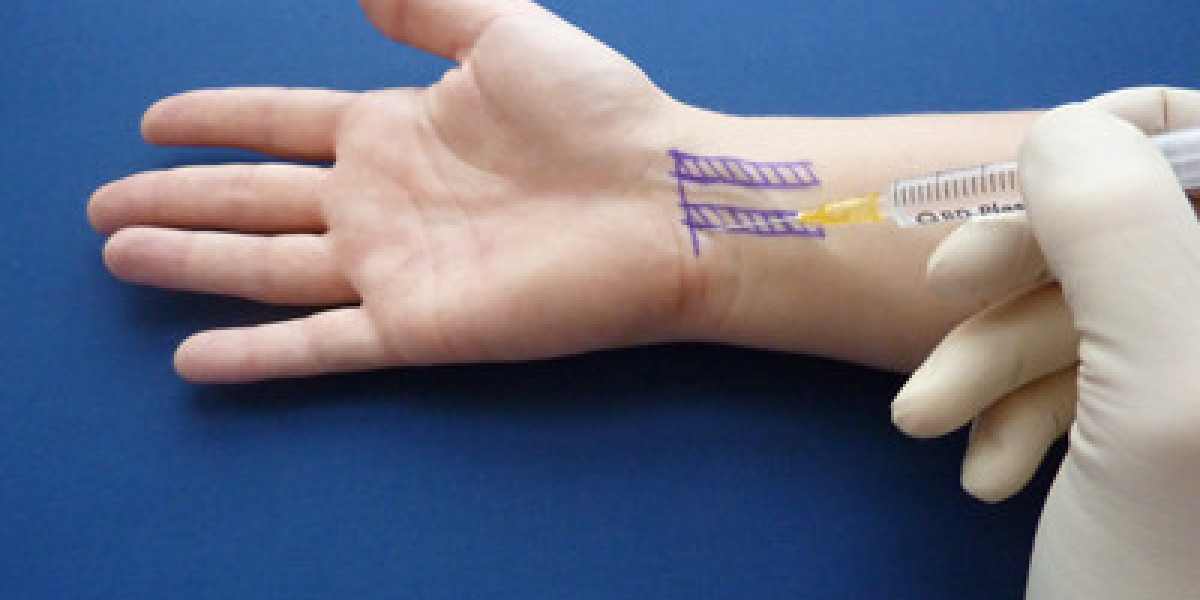Hand and wrist pain can disrupt even the simplest daily tasks, from typing on a keyboard to holding a coffee mug. One of the most common conditions associated with persistent pain and numbness in the wrist is carpal tunnel syndrome. This condition arises when the median nerve, which passes through the narrow tunnel in the wrist, becomes compressed or irritated. Among the many management options available, one of the most widely discussed and frequently recommended approaches is the use of carpal tunnel injections. These injections are often considered when conservative measures such as wrist splints, rest, and activity modification fail to provide enough relief.
Carpal tunnel injections are not a cure-all, but they play an important role in easing discomfort, reducing inflammation, and giving patients an opportunity to regain normal function without immediately resorting to surgery. This guide takes a deeper look into how these injections work, their benefits, limitations, and what patients can realistically expect.
Understanding Carpal Tunnel Syndrome
Carpal tunnel syndrome develops when the tissues surrounding the median nerve inside the wrist compress it, leading to pain, tingling, numbness, and weakness in the hand. The condition is often linked with repetitive hand movements, prolonged use of digital devices, or certain health conditions like diabetes and arthritis.
If left untreated, it can gradually worsen and interfere with daily activities. Early management usually involves non-invasive methods such as splinting at night, ergonomic adjustments at work, or physiotherapy. However, when symptoms persist or worsen, medical professionals may suggest injections as a targeted method to reduce inflammation and improve comfort.
What Are Carpal Tunnel Injections?
Carpal tunnel injections typically involve the use of corticosteroid medication, which is delivered directly into the carpal tunnel area. Corticosteroids are powerful anti-inflammatory agents that can reduce swelling and relieve pressure on the median nerve. In some cases, local anesthetics are also included in the injection to provide immediate short-term relief.
The procedure itself is relatively simple and can often be performed in a doctor’s office. A trained healthcare provider uses careful technique to place the injection in the correct area, sometimes guided by ultrasound imaging for greater accuracy. The goal is to relieve symptoms for a period of time and improve hand function.
How Carpal Tunnel Injections Work
The effectiveness of injections comes from their ability to reduce inflammation around the median nerve. By calming the swelling in the tendon sheath or surrounding tissues, the nerve experiences less compression. This not only alleviates pain but also decreases tingling and numbness in the fingers.
Some patients experience immediate relief due to the anesthetic component, while the steroid itself may take several days to reach full effect. Depending on the severity of the condition, relief may last for weeks or even months, although the duration varies from person to person.
Benefits of Carpal Tunnel Injections
There are several reasons why carpal tunnel injections are frequently recommended by healthcare providers:
Non-Surgical Option – Injections are minimally invasive compared to surgery and can delay or even eliminate the need for an operation in some cases.
Quick Relief – Many patients experience a reduction in pain and tingling soon after treatment, helping them return to normal daily tasks.
Targeted Treatment – Unlike oral medications, which affect the whole body, injections deliver medication directly to the problem area.
Bridge to Surgery – For those who may eventually require surgery, injections provide temporary relief while preparing for a longer-term solution.
Diagnostic Tool – Response to an injection can help confirm that symptoms are indeed caused by carpal tunnel syndrome rather than another condition.
Limitations of Carpal Tunnel Injections
While beneficial, injections are not a permanent cure. The relief they provide often diminishes over time, and repeated injections may be needed. Some important limitations include:
Temporary Relief: In many cases, injections only provide short-to-medium-term symptom control.
Not Suitable for Everyone: Individuals with advanced nerve damage may not see significant improvement.
Potential Side Effects: Though rare, injections can cause localized pain, infection, or skin changes.
Frequency Restrictions: Medical professionals generally recommend limiting the number of injections due to potential weakening of tendons and tissues with repeated use.
The Injection Procedure
The actual process is typically quick and straightforward:
Preparation: The wrist area is cleaned to minimize infection risk.
Positioning: The patient’s hand is positioned to allow easy access to the carpal tunnel.
Anesthetic Use: A local anesthetic may be applied to numb the skin.
Injection: Using either anatomical landmarks or ultrasound guidance, the doctor delivers the medication directly into the carpal tunnel.
Aftercare: The patient is advised to rest the wrist briefly and may experience mild soreness, which usually resolves within a day or two.
The entire procedure usually takes only a few minutes, and most individuals are able to resume light activities shortly afterward.
Recovery and What to Expect
After receiving an injection, many patients notice relief within a few days. In some cases, symptoms improve dramatically, allowing easier hand movement and reduced discomfort during daily tasks. However, it is important to remember that the benefits are not permanent, and symptoms can return once the effects wear off.
Patients are often advised to combine injections with other management strategies such as hand therapy, ergonomic changes, and wrist splints. This combination can extend the benefits of the injection and reduce the likelihood of recurrence.
Risks and Possible Side Effects
Although generally safe, injections do come with small risks. Potential side effects include:
Temporary pain or discomfort at the injection site
Bruising or swelling
Rare cases of infection
Skin thinning or color changes around the wrist
Weakening of tendons with repeated injections
For most individuals, these risks are minimal, especially when the procedure is performed by an experienced healthcare provider. Still, patients are encouraged to discuss their medical history and concerns before proceeding.
Comparing Injections with Other Treatments
Carpal tunnel injections are often part of a broader treatment strategy. Compared to wrist splints, which are non-invasive but may take longer to show results, injections provide faster relief. Compared to surgery, they are less invasive but also less permanent. Physical therapy, medications, and lifestyle adjustments remain important complements to injections.
In essence, injections act as a middle ground—more direct and powerful than conservative methods, but less invasive than surgical release. This makes them an attractive option for individuals who need relief but are not ready or eligible for surgery.
When to Consider Injections
Not everyone with carpal tunnel syndrome needs injections. They are usually considered when:
Symptoms persist despite rest, splints, or therapy.
Pain or tingling interferes significantly with work or daily life.
The patient is not a candidate for surgery or wants to delay it.
A doctor wishes to confirm the diagnosis through response to treatment.
Ultimately, the decision should be made in consultation with a medical professional who can weigh the risks and benefits based on the patient’s condition.
Long-Term Outlook
For some patients, injections provide months of relief, while others may experience only a few weeks of benefit. Repeated injections may help, but most doctors limit how often they are given. If symptoms continue to return or worsen, surgery might become the next step.
That said, injections can be an important part of the journey toward managing carpal tunnel syndrome. They offer valuable time and comfort, giving patients the chance to make lifestyle changes or prepare for more permanent treatment options.
Conclusion
Carpal tunnel injections are a valuable tool in managing the discomfort and functional limitations caused by nerve compression in the wrist. While they may not cure the condition, they provide relief that can make daily tasks more manageable. For many, these injections represent a middle ground between conservative care and surgery, offering targeted treatment with relatively low risk.
When combined with other approaches—such as therapy, ergonomic adjustments, and lifestyle changes—they can significantly improve quality of life. The key is working closely with healthcare professionals to choose the right treatment plan and to set realistic expectations. Carpal tunnel syndrome is a common challenge, but with the right strategies in place, relief and recovery are within reach.
















